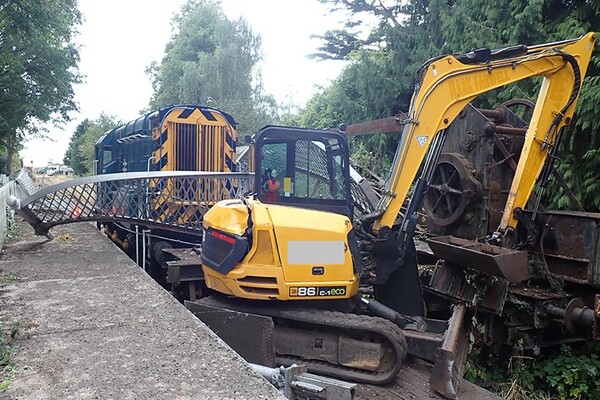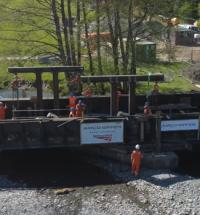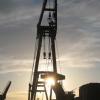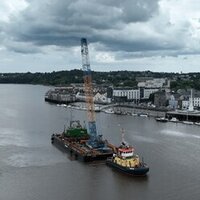The UK’s Rail Accident Investigation Branch (RAIB) has released its findings on the mid-August incident involving a heritage railway engineering train stricking an overpass footbridge while transporting a 360-degree excavator. The collision caused the 133-year-old lattice girder crossing at St Mary’s Halt in Gloucestershire, around 62km south-west of Cardiff, to collapse onto the platform and train. Fortunately, no injuries were reported. The RAIB report, published this week, confirms that the accident resulted from an error in how the excavator was loaded.

The strike brought the lattice girder bridge down onto the train and platform (Rail Accident Investigation Branch)
The investigation found that the volunteer who loaded the excavator had only passed a theory test and lacked practical training. Additionally, investigators found no written loading instructions, no height checks against route structures and no process to confirm compliance with the loading gauge. The excavator was positioned on the wagon nearest the locomotive, with its bucket resting on the wagon’s raised front deck, increasing overall height, but the driver could not see the load from the cab. As the digger’s dipper arm exceeded the bridge’s 4.35m vertical clearance by 26 centimetres, the machine collided with the crossing while the train was passing beneath it.
In the report, RAIB urges heritage railways to ensure safety-critical activities (such as the movement, shunting and stabling of trains) are undertaken by an adequate number of staff holding the correct competencies and volunteers only perform critical tasks that they are properly trained and assessed on. Other safety recommendations include introducing clear loading procedures, verifying load heights and carrying out risk assessments for unusual operations.
Built in 1892 and restored in 2019 after a US$198,510 (£150,000) fundraising campaign, the St Mary’s Halt footbridge was the last surviving structure of the historic Severn and Wye Railway, which began as a horse-drawn tramway in 1810 to move coal and iron ore across the Forest of Dean before conversion to a railway in the mid-19th century.
Following the collapse, Dean Forest Railway commissioned a structural survey of the bridge to assess the damage, but findings have not been released. While no rebuilding plans have been confirmed, it is likely the structure will need to be replaced or restored as it forms part of a public footpath.





